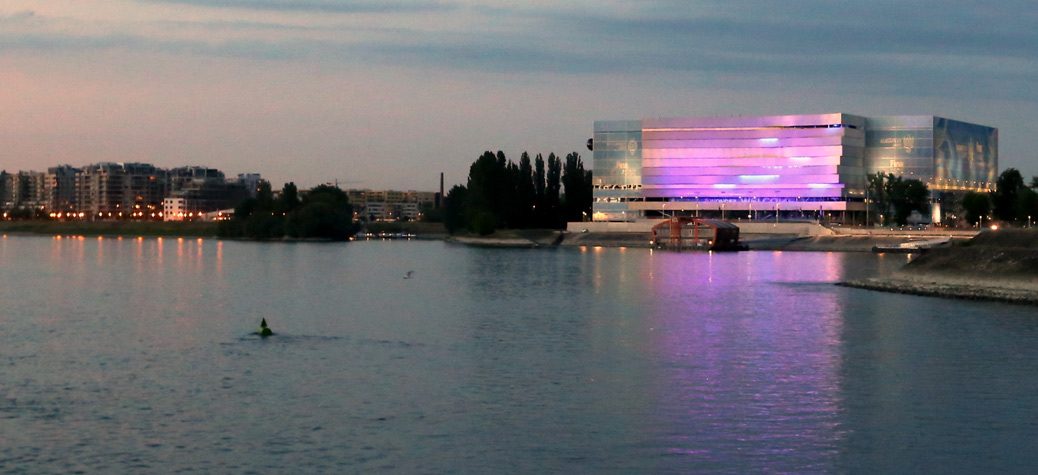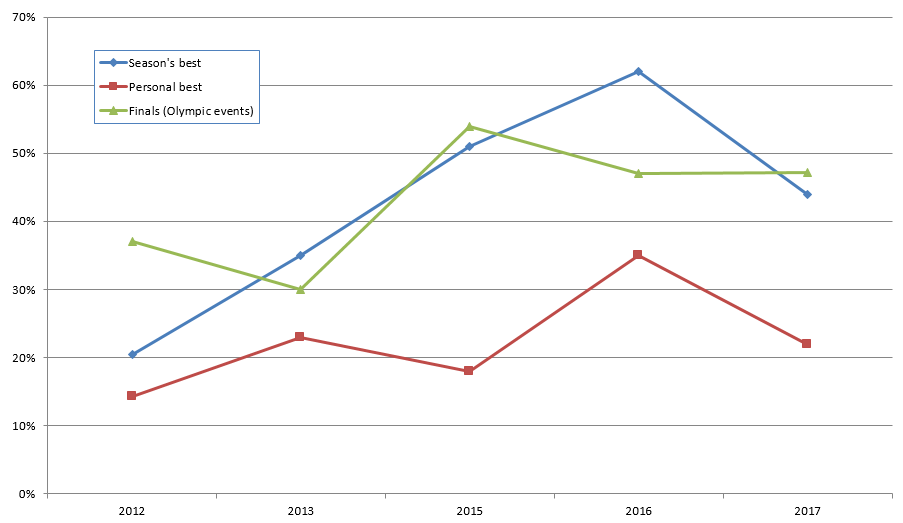With the pools in Budapest now turned over to the masters for their world championships, the time is right to cast an objective eye back over goings-on in the Duna Arena for the team of British swimmers at the world championships. With 7 medals secured over 8 days of racing in Hungary and second place on the medals table, on the face of it things look rosy. But while it was a creditable performance from the team, delving into the numbers tells a slightly different story.
As always, any assessment of the team is cannot target individuals; as outsiders we can’t know everything hat is going on with swimmers that may affect their performances in ways that are uncontrollable, such as injury, illness or simply having a bad day. Instead the aim is to see how overall trends emerge both this year and by comparison with years gone by. As ever, it is unlikely that everyone on a team will manage to be at their absolute peak all together, which is the reason any successful squad needs to have numerous potential medallists amongst their ranks and not to depend too heavily on one or two individuals.
Firstly, lets look at the key metrics that have been driving the ongoing improvement in Britain’s results on the global stage since London 2012, namely the proportion of season’s bests, personal bests and finalists. The first two are important because you can’t control what happens in other lanes, so it’s important to deliver your best performance, while you need to have a lane in a final to win the medals, so keeping that number up maximises the chances of hardware.
| Year | Swims | Semis | Finals | Medals | %age finals |
| 2012 | 49 | 21 | 18 | 3 | 37% |
| 2013 (Olympic events) | 40 | 16 | 12 | 1 | 30% |
| 2015 (Olympic events) | 39 | 20 | 21 | 6 | 54% |
| 2016 | 34 | 18 | 16 | 4 | 47% |
| 2017 (Olympic events) | 36 | 21 | 17 | 3 | 47% |
Note: Comparisons are for individual events only
This shows a big drop in season’s best and personal best performances from the high point in Rio, although to a level that is still in excess of 2012 and 2013, while the number of finalists held up in proportional terms from the Olympic Games. The team delivered a season’s best ratio of 44% in Budapest, a drop of 18% from last year, but that breaks down further to give a different context; those who were taking their world championships debut managed only 20% seasons bests, while those who had been there and done that were up at 67%, in excess of the figure achieved by the whole team last year.
This starkly illustrates the notion of “managing the environment” that Bill Furniss was keen to promote during the week, with perhaps the new members of the team, who delivered half of the individual swims, overawed by their surroundings. Certainly the indications are that those new swimmers will be better placed the next time their opportunity to swim at this level comes around but the other aspect of this is what happens between trials and the main meet. Of those debutants, 80% had set a lifetime best to get selected, but only a single swim was able to improve upon that in Budapest. That leads to inevitable questions about preparation and the difficulties of backing up such a high peak at trials. Certainly there is a lot more to it than going back to your home programme and doing the same things again to prepare. This year the whole team went on a training camp to Thailand and raced in Tokyo, while for the new swimmers there are also many new distractions to consider, as Ian Hulme, coach to Jocelyn Ulyett discussed on our trials podcast. Getting used to all those differences will help, but perhaps questions could be asked about how those new swimmers dealt with the new environments and experiences in training as well as the event itself.
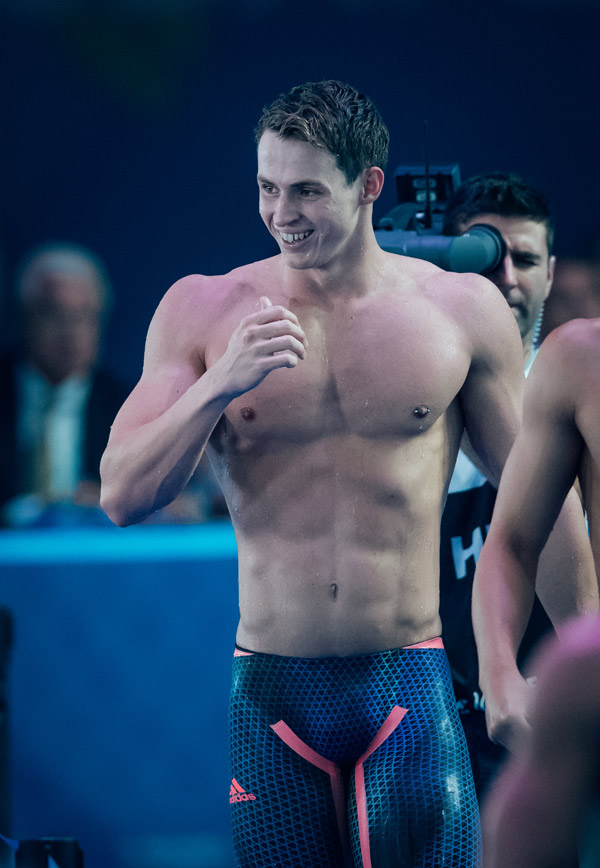
In terms of the overall team performance the thing that stands out was the second place on the medal table of course, and excellent though that is, it probably owes plenty to the dominance of the US and the redistribution of medals from under-par Australian and Chinese performances to a larger number of other nations. Two years ago Britain won more medals, with the same number of golds, and finished two places lower on the medal table. But the team can’t do anything about that and second is a great place to finish.
A more objective comparison however, is the FINA championship trophy and points which cover the whole team performance rather than just the medals. Britain took a bit of a step back here from Kazan, dropping from 4th to 6th, better only than the poor years of 2005 and 2013 in the last 8 championships. That speaks to a lack of depth in this year’s results, which subjectively feels right, particularly amongst the women’s team, who without medal winning contributions from Siobhan Marie O’Connor and Jazz Carlin appeared to lack any real medal contenders, despite a number of promising swims.
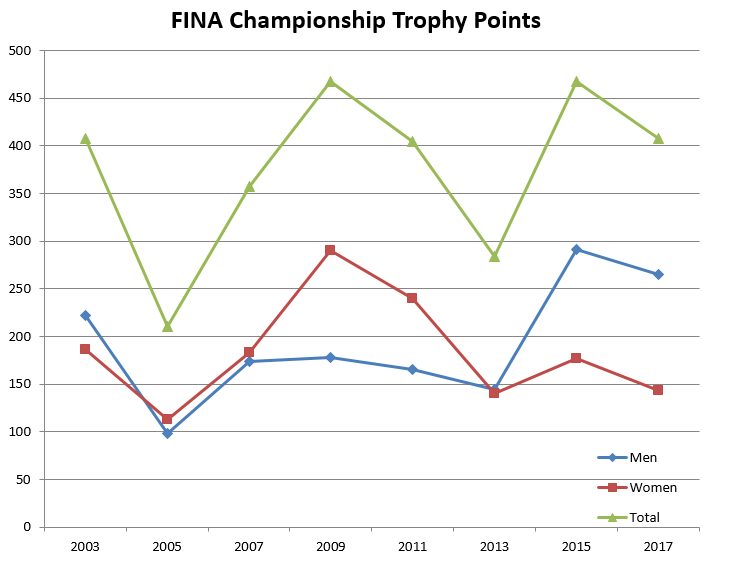
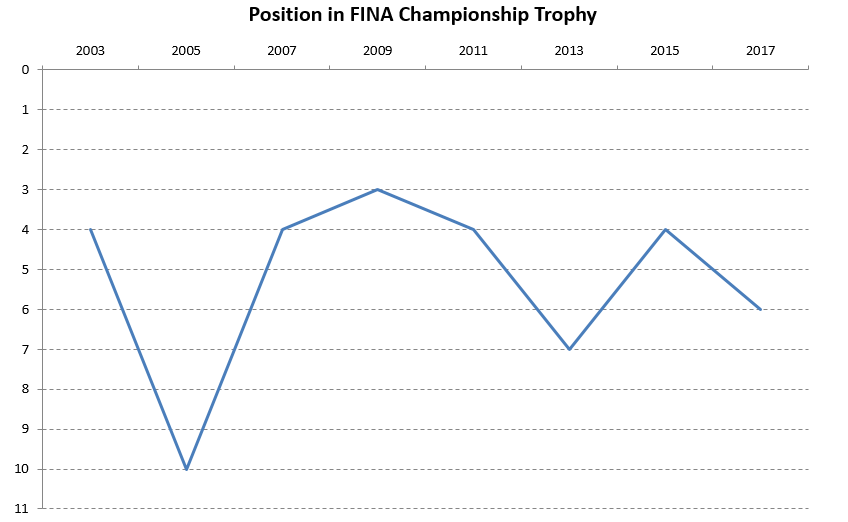
But what of the potential in this team? Looking at the potential ranks of season best performances, shows that only one additional bronze medal would have been secured so the team delivered very close to their potential in terms of podium placings. Personal bests would of course have delivered more medals, but half of these were swimmers who delivered a season’s best in Budapest anyway, and many of the others had taken long breaks post-Rio and were never likely to be back at the same peak here.
| Results with | ||||
| Actual times | Seasons Best | Personal Best | ||
| Gold | 3 | 3 | 4 | |
| Silver | 0 | 0 | 2 | |
| Bronze | 2 | 3 | 4 | |
| Finals | 21 | 29 | 30 | |
Note: Individual events only; one bronze medal could have been won by two different GB competitors in PB/SB comparisons but is only counted once here.
So this performance was something of a mixed bag. The good parts were very, very good, but they masked some elements that could be causes for concern. There were lots of comparisons made back to the start of the last Olympic cycle where the 2013 championships produced a single medal, but those comparisons are not entirely valid since the sport in Britain was in a state of flux that year, with changes in leadership and the experiment of late trials all confusing matters. Nonetheless it’s clear that the performance here was better than that and that there is potential amongst the newcomers. The key aims over the next few years will be to harness that potential, particularly on the women’s side, such that it can deliver when it matters.
Banner image by Thaler Tamas – Own work, CC BY-SA 4.0, Original Link

